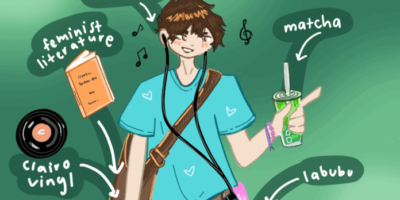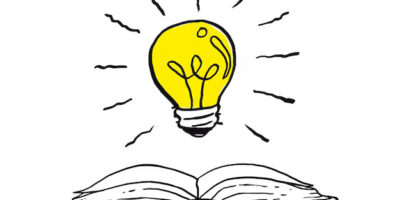Dan: “An IPA? Again??” Yeah yeah, we hear you. This might be the third time we’ve written about IPAs, but the first time it was a British IPA, next we did an American IPA, and now, the double IPA. World of difference here, people. As I’ve mentioned before, our goal has been to cover a different style in each Brew Man Group issue, but finding LCBO-available beers in less common styles is rather (effing) impossible. Want a Flanders Oud Bruin (old brown ale), German Gose, French Bière de Garde? How about an Altbier, Maibock, or Saison? Good luck, fellow Ontario inhabitants. This is the very reason we chose to review Tree’s Hop Head. Simple IPAs are hard enough to find in Ontario, so having access to one of ‘double’ proportions is indeed cause for celebration. I have plenty more LCBO trash talking to go through, but first let’s hear more about Tree brewing from my favourite aspiring brewer (and household D-bag), Neil.
Neil: I hate you Dan… Tree Brewery was started by Tod Melnyk, in 1996 with a modest capacity of 6000 hectolitres, however this was soon upgraded to a 20000 hectolitre capacity within a year. Besides handle bar mustaches, washed out denim and tweeked grabs, those Kelowna (BC) hooligans must enjoy a respectable pint or two. The induction of German brew-master (AKA magician of fermentation) Stefan Buhl has been credited for improving the operations and quality of beer over the years. Their regular lineup of beer are nothing atypical; an amber, pilsner, blonde and pale ale. However the inception (I’ve wanted to use this word for a while) of Hop Head Double IPA (2009) has certainly raised their street credit among beer aficionados. In addition to public approval, the DIPA was also received well in competition, obtaining a gold medal in the 2009 Canadian Brewing Awards. Fortunately for us, this spring we can now begin to enjoy this west-coast style brew at leisure, providing of course that a bunch of no-name first years don’t buy out the LCBO with their OSAP funding.
Dan: Most likely, you’ve heard the IPA story before. The general idea was that in the late 18th and early 19th centuries, British brewers came up with special pale ales that could endure the long voyage to the troops stationed in India, with both higher alcohol levels and extra hops acting as preservatives. The extent to which this is true is open for debate; it’s been reported that beers such as these already existed and were simply the most refreshing for army dudes dealing with the hot South Asia weather.
Today, the India Pale Ale is one of the most common beer styles in the world. Beeradvocate.com lists almost 2000 American IPAs, let alone British and Double IPAs, which pushes the number over 3000. It’s curious to note then, that the LCBO chooses to carry only two IPAs on their general list, neither of which is easy to find. As a comparison, over reading week I visited Kalamazoo, Michigan (population ~ 100,000), whose grocery stores carry at least four IPAs, and whose liquor stores carry dozens. Freaking Valhalla for me (and any beer lover). This would be the result of alcohol sale privatization in Ontario: a selection that caters to the taste of the people, not that of bureaucrats and lab tests. My apologies for this extended rant, but my hope is that some will develop the same dissatisfaction I have for our government-run monopoly. I have equal disdain for the corporate-owned Beer Store, but that may have to wait until the next issue.
Neil’s thoughts:
As I crack the bottle, this caramel orange pours and froths a wee bit in my standard “get silly” beer glass. At least, that’s the end result when you fill (and drain) 650mL of a very quaffable 8.3% brew in half an hour… Alas, a brief whif revealed ripe grapefruit, pine, and caramel malts. It didn’t take me long before I managed to take a quick lick, in which my first thoughts were, “Is this a DIPA or a barley wine?”… The thick and sweet malt is backed up with the complementary hop profile, but the bitterness is not astringent. In fact, I haven’t had one this tasty is a long time, perhaps since the double IPA from Baird Beer (Japan). I will say though, this brew comes across as the brother of barley wine, but perhaps we might even call it a “Dan sized” little brother in relative proportion. But all-in-all, it’s mature, complex and well-thought out. Give it a try for shiz! [4/5]
Dan’s thoughts:
This beer has developed quite a buzz, so I’m hoping it can live up to the hype. It pours a pretty dark amber (darker than I’d expect for the style). The smell is full of juicy hops, showing off grapefruit, pineapple, and pine, as well as some fruity berry aromas (awesome!). But behind this lies some intense caramel aromas, making me a little less stoked for my first sip. The taste has some intense grainy flavour that I didn’t pick up in the nose (perhaps a result of having chewed on a few too may grains of barley), and the caramel malt is still very much present. Along with just a touch of alcohol, the hops balance it out with a potent bitterness, though not as much flavour as I hoped. This is, with all due respect, a Canadian double IPA. There’s a stellar hop profile, but overuse of crystal malts results in a caramel sweetness that takes away from the intensity. This beer is tasty and supremely drinkable, though after a week in Michigan drinking beers like Bell’s HopSlam, it’s not quite quenching my DIPA thirst. [3.5/5]
Recommended if you like: Flying Monkeys Smashbomb IPA, Great Lakes Devil’s Pale Ale, Mill Street Tankhouse, Railway City Dead Elephant Ale
Props to hops // Dan and Neil




Leave a Reply